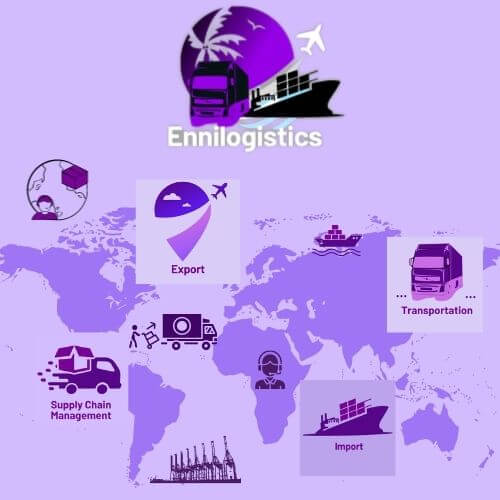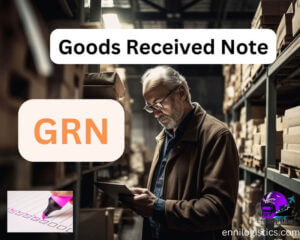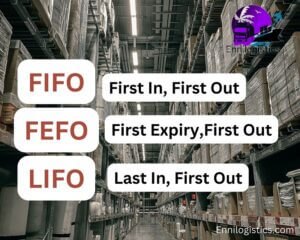In the logistics industry, freight tracking is an intricate method of monitoring and tracing shipments from origin to destination. It entails the use of advanced logistics tracking systems that make use of technologies such as GPS and data analytics. Transparency, operational efficiency, and customer satisfaction are all ensured by this journey. We’ll examine the crucial phases of this journey in this article, along with the ways in which technology can revolutionize freight tracking. As we set out on this incredible journey, join us.
What is the importance of tracking and tracing for logistics operations?
Freight tracking is essential for ensuring smooth operations in the quick-paced world of logistics, where dependability and efficiency are crucial. Businesses can optimize procedures, reduce risks, and provide exceptional customer experiences thanks to its real-time visibility and control over shipments.
- Timely Deliveries
Freight tracking enables businesses to monitor the progress of shipments, ensuring they reach their destinations on time. By tracking the location and status of goods, logistics teams can proactively identify potential delays or disruptions. For instance, a courier company can use real-time tracking to reroute a package in case of unexpected traffic or weather conditions, ensuring timely delivery to the customer.
- Inventory Management
Accurate tracking of shipments aids in effective inventory management. By knowing the exact location and expected arrival times of incoming goods, warehouses and distribution centers can plan and allocate resources efficiently. For example, a retail chain can monitor the progress of a shipment containing high-demand products, allowing them to optimize shelf restocking and meet customer demands without excess inventory.
Customer Satisfaction: Freight tracking enhances customer satisfaction by providing transparency and peace of mind. When customers can track their orders in real-time with the given logistics tracking number, they gain confidence and trust in the logistics process. Imagine a customer eagerly awaiting a package and receiving regular updates on its whereabouts. This level of transparency builds loyalty and fosters positive customer experiences.
- Supply Chain Optimization
Freight tracking facilitates supply chain optimization by identifying bottlenecks and inefficiencies. With comprehensive data on transit times, route performance, and delivery patterns, logistics managers can analyze and fine-tune their operations. For instance, a shipping company can identify recurring delays on a specific route and take corrective measures to streamline the process, reducing costs and improving overall efficiency.
- Security and Risk Mitigation
Freight tracking systems enhance security measures and mitigate risks. For valuable or sensitive shipments, real-time tracking allows companies to monitor the cargo’s movement and promptly respond to any unauthorized activities. For instance, a pharmaceutical company shipping temperature-sensitive medications can track the shipment’s temperature in real-time, ensuring compliance with storage requirements and minimizing the risk of spoilage.
- Collaborative Decision-Making
Freight tracking fosters collaboration among stakeholders involved in the logistics chain. By providing real-time visibility into shipments, all parties can make informed decisions and coordinate efforts effectively. For instance, a manufacturer can monitor the progress of raw material deliveries, enabling them to adjust production schedules and coordinate with suppliers for seamless operations.
By embracing advanced tracking technologies and leveraging real-time data, businesses can navigate the complex landscape with confidence and efficiency, delivering exceptional results in an increasingly competitive market.

What are the steps in shipping logistics?
Step 1: Collect the Required Data
Make sure you have all the necessary information before starting your shipping adventure. Included are the addresses, phone numbers, and email addresses of the sender and recipient, as well as any special instructions or demands. Having this knowledge on hand will guarantee a smooth process and promote efficient communication throughout the journey.
Step 2: Choose the Proper Packaging
For your goods to be safe during transit, selecting the appropriate packaging is essential. When choosing packaging materials, keep in mind the nature of the items being shipped and choose ones that offer sufficient cushioning, durability, and protection. Make sure your goods are securely packaged for their journey, whether it’s with strong boxes, bubble wrap, or specialized containers.
Step 3: Document and Label
For logistics operations to run smoothly, accurate labeling and documentation are essential. Clearly label your packages with legible information, including the recipient’s address, tracking numbers, and any handling instructions. Additionally, to comply with the rules and hasten the customs clearance process, prepare all required shipping documents, such as invoices, customs forms, or certificates.
Step 4: Pick the Best Carrier
For a timely and dependable delivery, choosing the right carrier is crucial. Think about things like the destination, the transit time, the price, and the carrier’s track record with similar shipments. Consider a variety of providers, then pick the one that best meets your needs and provides first-rate service.
Step 5: Follow up and check in
Take advantage of freight tracking’s power once your shipment has departed. To track the status of your shipment in real time, use the tracking tools offered by your carrier or sophisticated logistics tracking systems. Keep up with any updates, its location, and the anticipated time of delivery. This visibility allows you to make proactive decisions and ensures that you are better equipped to deal with any unforeseen difficulties.
Step 6: Coordinate with others.
Throughout the shipping process, effective communication is critical. Maintain constant contact with your carrier, clients, and any other relevant parties. Update them frequently on the status of the shipment, respond to any issues right away, and organize any necessary arrangements or modifications to guarantee a smooth delivery experience.
Step 7: Acknowledge and Verify Delivery
Finally, be there to confirm delivery when your shipment is received at its destination. Check the items carefully for any damage or inconsistencies. If everything is in order, sign the delivery receipt to confirm that the package has been successfully received. If there are any problems, make a note of them and alert the carrier right away to start the repair procedure.
You can easily and effectively navigate the complexities of setting up and tracking shipments by following this step-by-step manual. Each step is essential to a successful logistics operation, from gathering data to choosing packages, picking the best carrier, and utilizing cutting-edge tracking technology. So set out on this journey with confidence, and then watch as your shipments travel without incident from point A to point B.
In-Transit Tracking: Navigating the Journey
When it comes to tracking shipments during transit, there are various methods that ensure visibility and control. Let’s explore these methods and uncover the secrets behind efficient in-transit tracking.
One of the most widely used methods is the implementation of GPS tracking systems. By equipping shipments with GPS devices, logistics professionals can accurately track their location in real time. These devices communicate with satellites to provide precise positioning information, enabling businesses to monitor the progress of their shipments with confidence.
Satellite technologies also play a vital role in in-transit tracking. They enable seamless communication and data exchange between the shipment and the control center. Satellite systems ensure uninterrupted connectivity even in remote or challenging locations, allowing for continuous monitoring and updates on the shipment’s whereabouts.
Real-time tracking empowers businesses with better visibility and control over their shipments. By receiving instant updates on location, estimated arrival times, and any unexpected events, logistics teams can proactively address issues and make informed decisions. This level of control improves operational efficiency, reduces the risk of delays, and enhances customer satisfaction.
However, in-transit tracking does come with its share of challenges. Connectivity issues, especially in remote areas or regions with limited network coverage, can hinder real-time tracking. To overcome this, some tracking systems employ hybrid approaches that combine cellular networks, satellite communications, and even Bluetooth or Wi-Fi connections.
Additionally, customs clearance procedures can also pose challenges during in-transit tracking. Delays at borders or ports of entry may impact the accuracy of estimated arrival times, requiring flexibility and effective communication between all parties involved. It is crucial to collaborate closely with customs authorities and ensure proper documentation to minimize potential disruptions.
in-transit tracking is a crucial part of the logistics journey. GPS tracking systems, satellite technologies, and real-time updates empower businesses with better visibility and control. Despite challenges such as connectivity issues and customs clearance, logistics professionals can overcome these obstacles through innovative solutions and effective collaboration.
Arrival and Delivery Tracking: Reaching the Final Destination
Upon arrival at the destination, the tracking journey continues, and the focus shifts to warehouses and distribution centers. These facilities play a crucial role in receiving, sorting, and managing incoming shipments. By leveraging advanced tracking systems and scanning technologies, warehouses can accurately log the arrival of shipments and update their status in real time.
The last-mile delivery tracking process takes center stage, as it involves the final leg of the journey from the distribution center to the customer’s doorstep. Mobile applications and customer notifications become instrumental in providing timely updates and enhancing transparency. Customers can receive notifications regarding the expected delivery time, track the progress of their shipments, and even opt for convenient delivery options.
These customer-centric tracking features not only provide peace of mind but also enable customers to plan and adjust their schedules accordingly. Whether it’s a text message, email, or push notification, these updates foster a sense of engagement and build trust between businesses and their customers.
Finally, warehouses and distribution centers support arrival and delivery tracking to ensure a smooth and customer-focused experience. Businesses can inform customers at every stage of the journey using mobile applications and notifications, making the last-mile journey enjoyable and hassle-free.
Looking ahead, the nature of tracking freight is expected to change quickly. The tracking landscape is changing as a result of technological advancements like the Internet of Things (IoT), artificial intelligence, and big data analytics. With real-time tracking with greater accuracy, predictive analytics for proactive decision-making, and automated alerts for immediate notifications, these innovations offer previously unheard-of capabilities. Future freight tracking has huge potential for improved efficiency, customer-centricity, and optimization.In conclusion, effective logistics operations are built on the foundation of freight tracking. It increases customer satisfaction, promotes transparency, and allows for ongoing development. Future possibilities for even greater efficiency and innovation in freight tracking are exciting as technology develops. A new era of superior logistics will undoubtedly come about as a result of embracing these developments and utilizing the power of the freight tracking journey.










